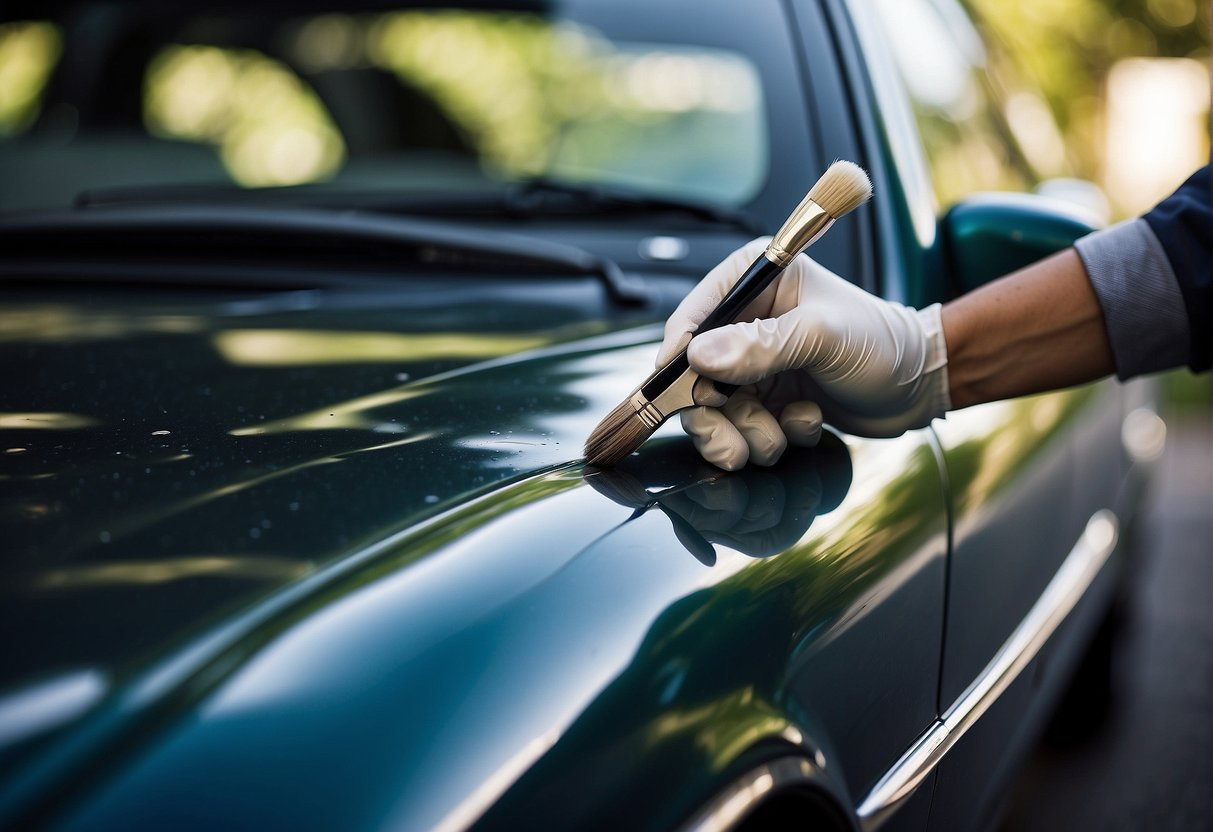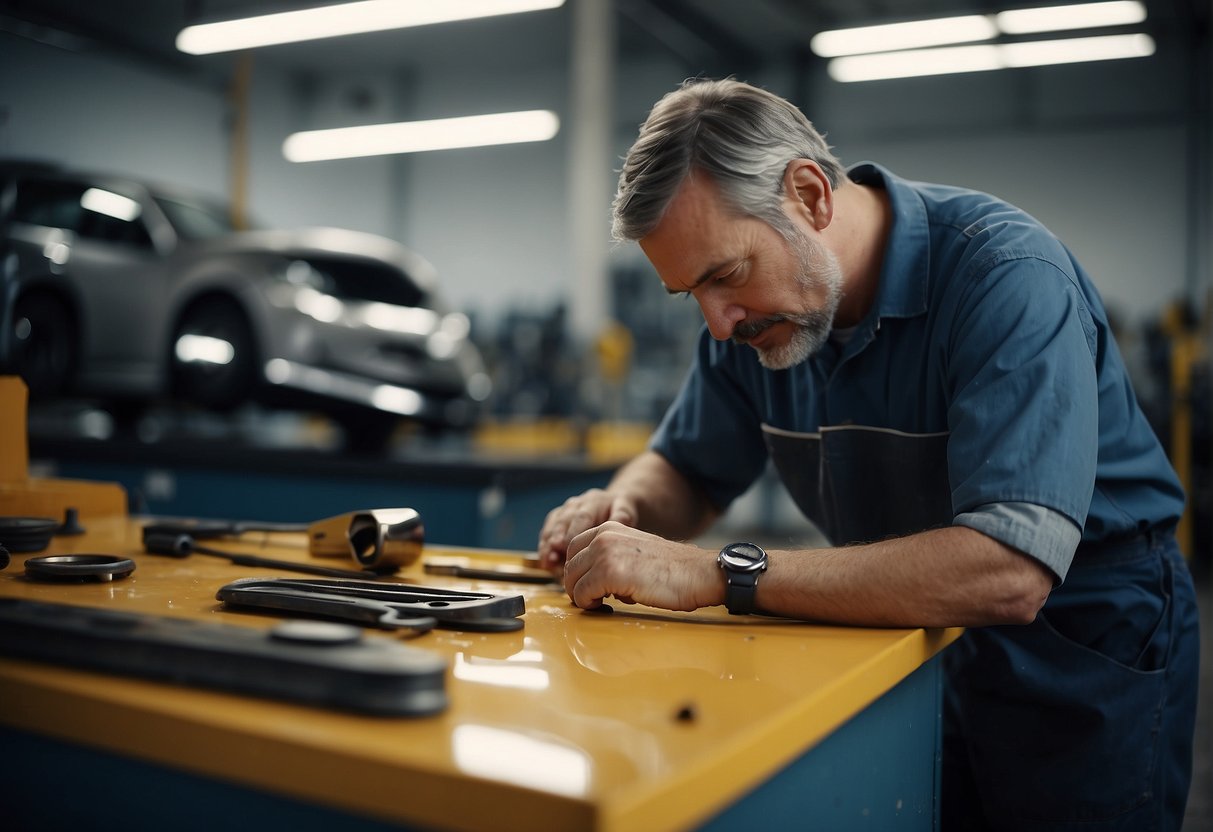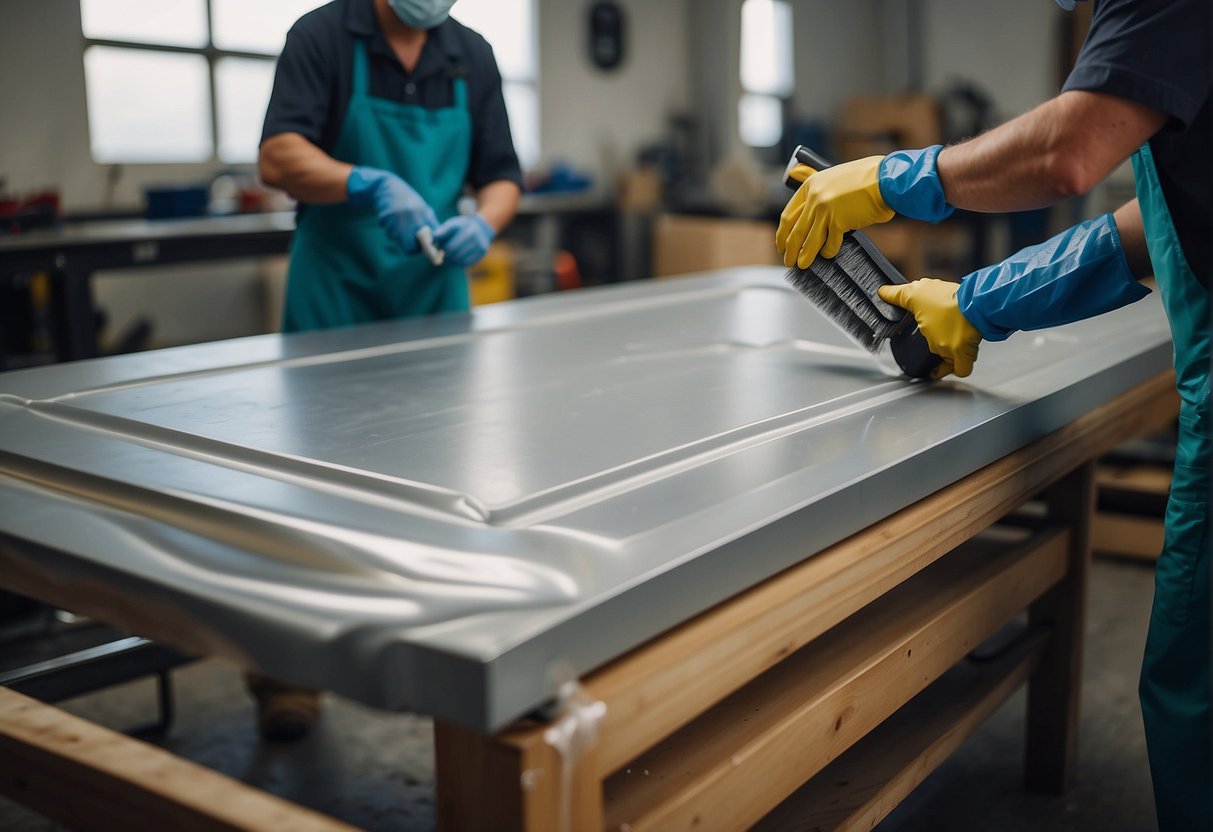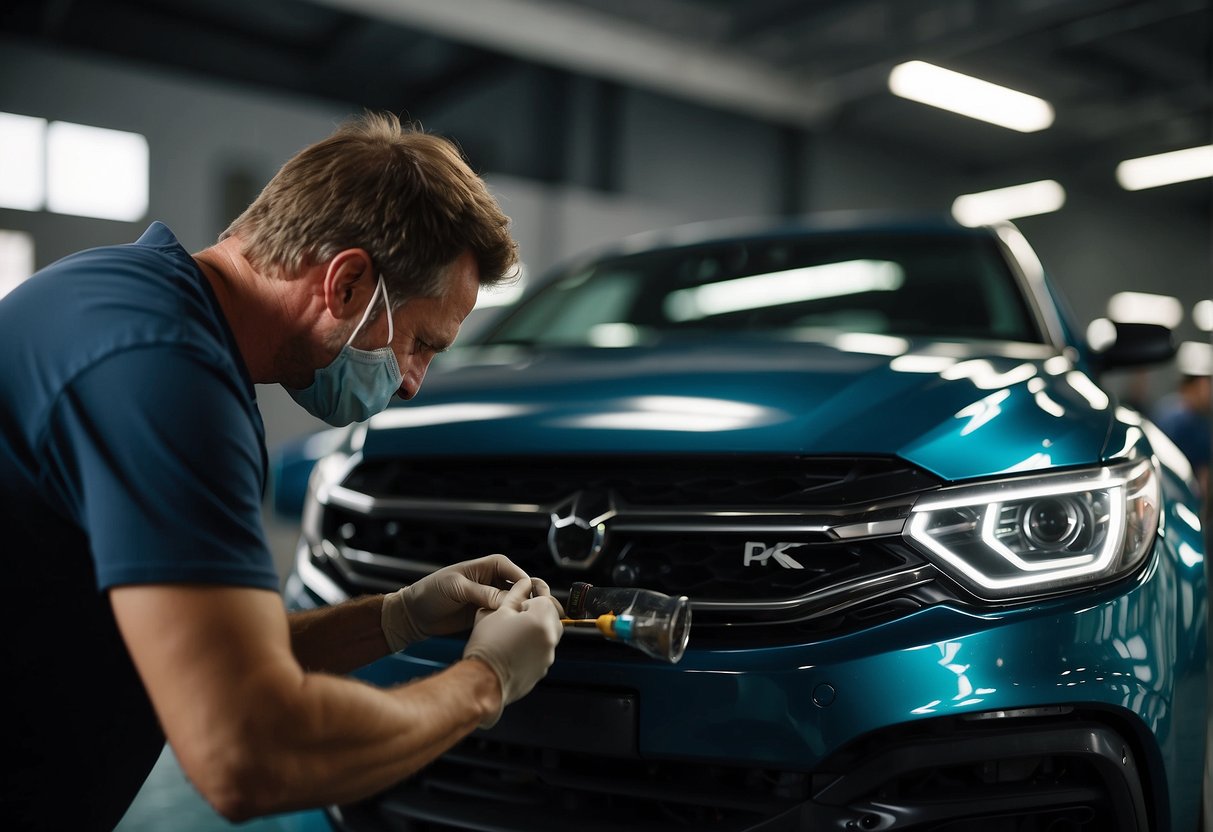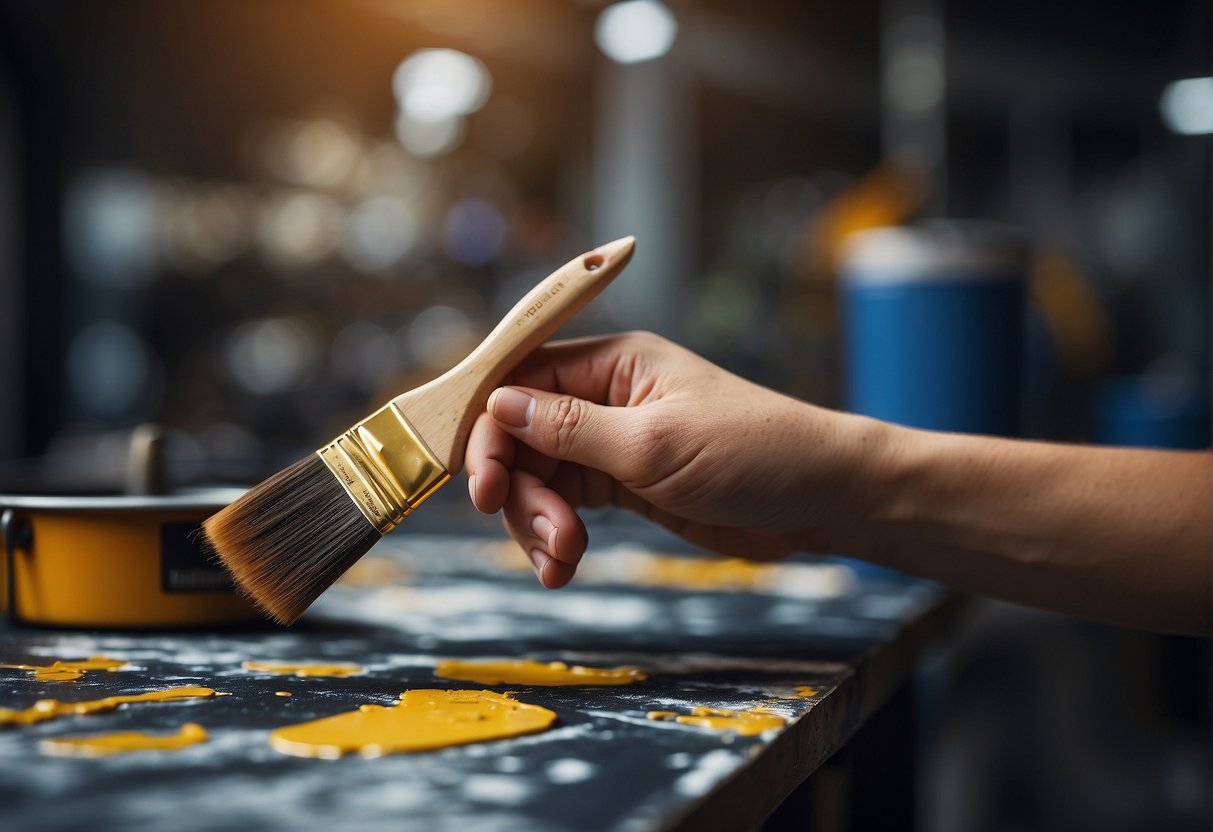Lacquer peel is a common issue that many car owners face. It occurs when the clear coat on the car’s surface starts to peel off, which can be unsightly and leave the car’s paintwork exposed to the elements. If you’re dealing with lacquer peel, you’re probably wondering how much it will cost to repair. In this article, I’ll be discussing the factors that affect the cost of lacquer peel repair and what you can expect to pay.
Understanding Lacquer Peel
Lacquer peel occurs when the clear coat on a car’s surface starts to peel off. This can happen due to a variety of factors, including exposure to the sun, harsh weather conditions, and poor maintenance. When the clear coat starts to peel, it can leave the car’s paintwork exposed to the elements, which can lead to further damage if left untreated. If you’re dealing with lacquer peel, it’s important to understand the repair process and what factors can affect the cost of repair.
Key Takeaways
- Lacquer peel is a common issue that can occur due to a variety of factors.
- The cost of lacquer peel repair can vary depending on several factors, including the extent of the damage, the type of repair required, and the location of the repair shop.
- It’s important to properly prepare for lacquer peel repair and consider both professional and DIY repair options.
Understanding Lacquer Peel
Lacquer peel is a common problem that affects the paintwork of vehicles. It occurs when the clear coat layer of the paintwork begins to peel away from the color coat layer underneath. Lacquer peel can be caused by a number of different factors, including damage, oxidation, and weather.
Causes of Lacquer Peeling
One of the main causes of lacquer peel is damage to the paintwork. This can occur as a result of accidents, scratches, or chips in the paint. When the clear coat layer is damaged, it can begin to peel away from the color coat layer, leading to lacquer peel.
Another common cause of lacquer peel is oxidation. Over time, exposure to the elements can cause the clear coat layer to break down and become brittle. This can lead to peeling and flaking of the clear coat layer.
Weather is also a factor that can contribute to lacquer peel. Extreme temperatures, humidity, and exposure to UV radiation can all cause the clear coat layer to deteriorate and peel away from the color coat layer.
Signs and Symptoms
The most obvious sign of lacquer peel is the appearance of flaking or peeling clear coat on the surface of the paintwork. This can be unsightly and can also lead to further damage if left untreated.
Other symptoms of lacquer peel may include discoloration of the paintwork, as well as a rough or uneven texture on the surface of the affected area.
If you notice any signs of lacquer peel on your vehicle, it is important to take action to address the problem as soon as possible. Ignoring the issue can lead to further damage and may result in more costly repairs down the line.
Preparation for Lacquer Peel Repair
Before starting the repair process, I need to assess the damage and gather the necessary materials.
Assessing the Damage
I will need to inspect the affected area to determine the extent of the damage. If the lacquer peel is minor, I may be able to repair it with just sandpaper and wax. However, if the damage is more severe, I may need to use primer and paint to fix it properly.
Gathering Materials
To repair the lacquer peel, I will need the following materials:
- Sandpaper: I will need sandpaper with different grits, including a fine grit to smooth out the surface after sanding.
- Primer: If the damage is severe, I will need to apply primer to the affected area before painting.
- Paint: I will need paint that matches the color of my car.
- Wax: I will need wax to protect the repaired area and give it a shiny finish.
If I am planning to do the repair myself, I will need to make sure that I have all the necessary tools and equipment. I may also need to watch some tutorials or read some guides to ensure that I am doing the repair correctly.
In conclusion, before starting the lacquer peel repair process, I need to assess the damage and gather all the necessary materials. This will ensure that the repair process goes smoothly and that the repaired area looks as good as new.
Professional Repair Process
Choosing a Body Shop
When it comes to repairing lacquer peel, it’s important to choose a reputable auto body shop. Look for a shop that has experience with clear coat peeling and has a good reputation in the community. You can check online reviews or ask for recommendations from friends and family.
It’s also important to get an estimate from the body shop before you commit to any repairs. Make sure the estimate includes all the necessary repairs, such as sanding, priming, and repainting. If you want a custom color, make sure to discuss this with the body shop beforehand.
The Repair Procedure
The repair process for lacquer peel typically involves sanding down the affected area to remove the peeling clear coat. The body shop will then apply a new layer of clear coat and allow it to dry. If necessary, they may also repaint the affected area to match the rest of the car.
The cost of the repair will depend on the extent of the damage and the amount of work required. On average, you can expect to pay anywhere from $500 to $1500 for professional repairs.
It’s important to note that repairing lacquer peel is not a DIY job. It requires specialized tools and expertise, and attempting to fix the issue yourself could result in further damage to your vehicle.
In conclusion, if you’re dealing with clear coat peeling, it’s best to leave the repairs to the professionals. Choose a reputable auto body shop, get an estimate, and let them handle the repair process for you.
DIY Repair Guide
As a car owner, it’s possible to fix lacquer peel at home without spending a lot of money. Here is a step-by-step guide to repairing lacquer peel on your car.
Step-by-Step DIY Instructions
-
Start by washing the affected area with soap and water. This will help remove any dirt or debris that may be present on the surface.
-
Dry the area with a clean microfiber towel.
-
Using 1000 grit sandpaper, gently sand the affected area. Make sure to sand beyond the original damage to ensure that the new coat of lacquer will adhere properly.
-
After sanding, use a clean microfiber towel to remove any dust or debris from the surface.
-
Apply a primer to the affected area. This will help the new coat of lacquer adhere to the surface.
-
Allow the primer to dry completely before applying the new coat of lacquer.
-
Apply a new coat of lacquer to the affected area. Make sure to apply the lacquer evenly and smoothly.
-
Allow the lacquer to dry completely before applying a wax to the area. This will help protect the new coat of lacquer and keep it looking shiny.
Common Mistakes to Avoid
-
Using sandpaper that is too coarse can damage the surface of the car and make the problem worse.
-
Not allowing the primer or lacquer to dry completely before applying the next coat can cause the new coat to peel.
-
Applying too much or too little lacquer can also cause the new coat to peel.
-
Not using a wax to protect the new coat of lacquer can make it more susceptible to damage in the future.
By following these steps and avoiding common mistakes, it’s possible to repair lacquer peel on your car at home. However, if you’re not comfortable doing it yourself or if the damage is too severe, it’s always best to take your car to a professional.
Cost Considerations
When it comes to repairing lacquer peel, the cost can vary depending on a number of factors. In this section, I will discuss the factors that influence repair costs and how to get and compare quotes.
Factors Influencing Repair Costs
The cost of repairing lacquer peel can be influenced by a number of factors. Some of the key factors to consider include:
- The extent of the damage: The more extensive the damage, the more expensive the repair is likely to be.
- The type of vehicle: The cost of repairing lacquer peel can vary depending on the make and model of the vehicle.
- The location of the damage: The location of the damage can also impact the cost of repairs. For example, repairing lacquer peel on a door may be less expensive than repairing it on the hood or roof of a vehicle.
- The type of repair: The cost of repairing lacquer peel can also vary depending on the type of repair that is needed. For example, if a full repaint is required, this will be more expensive than a touch-up.
Getting and Comparing Quotes
When it comes to getting quotes for lacquer peel repair, it is important to do your research and shop around. Here are some tips to help you get and compare quotes:
- Look for local body shops: Start by looking for local body shops that specialize in auto body repair. This will help you find shops that are familiar with the specific needs of your vehicle and can provide accurate quotes.
- Get multiple quotes: It is always a good idea to get multiple quotes from different body shops. This will help you compare prices and find the best deal.
- Ask about the repair process: When getting quotes, make sure to ask about the repair process and what is included in the price. This will help you understand what you are paying for and avoid any surprises.
- Consider the reputation of the shop: Finally, when comparing quotes, it is important to consider the reputation of the body shop. Look for reviews and testimonials from past customers to get an idea of the quality of work and customer service that you can expect.
Frequently Asked Questions
What is the typical price range for repairing clear coat peeling on a vehicle?
The cost of repairing clear coat peeling on a vehicle can vary widely based on several factors, such as the extent of the damage, the location of the damage, and the type of vehicle. On average, you can expect to pay anywhere from $150 to $500 for a professional repair job. However, the cost can be higher or lower depending on the severity of the damage and the type of car you own.
How much would it cost to fix chipped paint on a car?
The cost of fixing chipped paint on a car can vary depending on the extent of the damage and the type of vehicle. On average, you can expect to pay between $50 and $1,000 for a professional repair job. The cost can be higher if the damage is extensive or if you own a luxury car.
Can clear coat peeling be repaired, and if so, what are the expected costs?
Yes, clear coat peeling can be repaired. The expected costs can vary depending on the extent of the damage and the type of vehicle. On average, you can expect to pay anywhere from $150 to $500 for a professional repair job. The cost can be higher if the damage is extensive or if you own a luxury car.
What factors influence the cost of repairing lacquer peel on a car?
Several factors can influence the cost of repairing lacquer peel on a car. The extent of the damage, the location of the damage, the type of vehicle, and the experience of the repair technician are all factors that can affect the cost. Additionally, the cost can be higher if the damage is extensive or if you own a luxury car.
How does the make and model of a vehicle, such as a BMW, affect the price of lacquer peel repairs?
The make and model of a vehicle can affect the price of lacquer peel repairs. Luxury cars, such as BMWs, can be more expensive to repair due to the higher cost of parts and the need for specialized technicians. Additionally, some vehicles may require more extensive repairs due to the complexity of their design, which can increase the overall cost.
What are the common causes of lacquer peel on automobiles?
Lacquer peel on automobiles is often caused by exposure to the elements, such as sunlight, rain, and snow. Additionally, exposure to chemicals, such as those found in car wash soaps and detergents, can also contribute to lacquer peel. Poor maintenance, such as failing to wax or polish your car regularly, can also increase the risk of lacquer peel.

Hi, I’m Sal Muller of Tooltrip.com. My DIY experience led me to understand essential power tools for home projects. Tooltrip.com guides enthusiasts and professionals in choosing right tools for any job. I provide concise top tool reviews for easier, efficient DIY.

